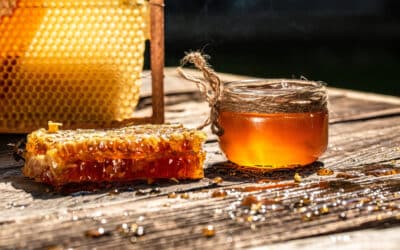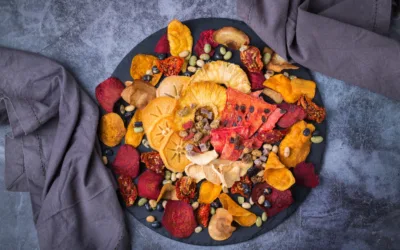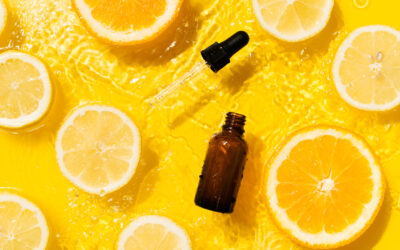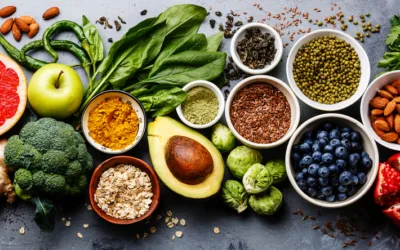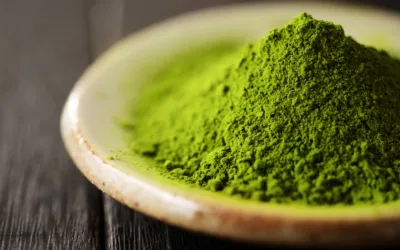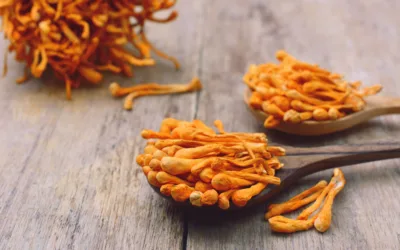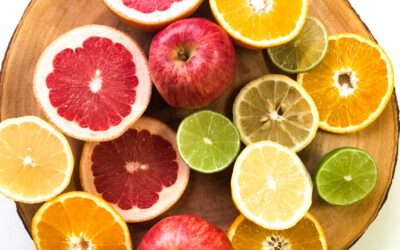The Magical Power of Polyphenols
Polyphenols are magical little compounds found largely in fruits, vegetables, tea, coffee, and cocoa. There are over 8000 polyphenols identified in nature and they are what we know of as antioxidants. They are basically the plant’s defense mechanisms and they activate various pathways and healing systems throughout our body.
As the name ‘antioxidant’ suggests, they inhibit oxidation from outside triggers like toxins, poor diet, stress, and excessive sun exposure. Antioxidants help to protect our DNA and healthy cells from being damaged, while fighting off cancer causing, harmful free radicals.
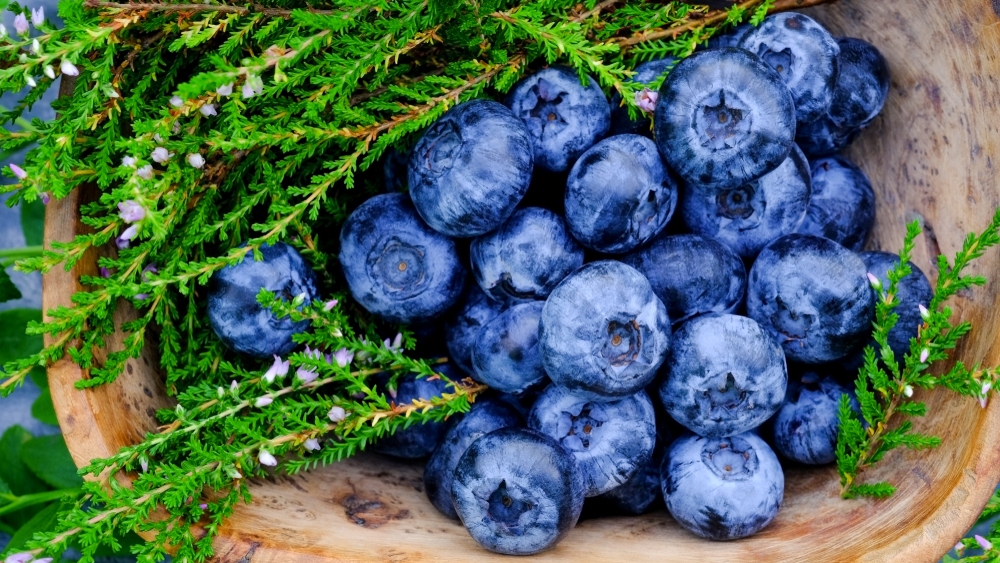
So what does all of this mean? Well, every time you eat, breathe, and exercise, millions of chemical reactions take place with oxygen to keep your body alive and functioning. The natural byproducts of these reactions are called ‘reactive oxygen species’, otherwise known as free radicals. If you have an inadequate reserve of antioxidants in your body, free radicals can damage the structure and function of your cells and DNA. This damage is known as oxidative stress. Imagine an apple after it is cut in half and left out in the open. After some time the flesh turns brown and becomes wrinkly. This is because the apple is becoming oxidized. But if you squeeze lemon juice on the apple soon after cutting it, it will maintain its original color and shape when left out in the air. This is because of the protective antioxidants in the lemon juice. This is similar to what happens in your body. We need antioxidants to protect our cells from oxidation. Having too many free radicals and too few antioxidants and polyphenols has been linked to chronic inflammation, rheumatoid arthritis, asthma, cancer, cardiovascular disease, stroke, Crohn’s disease, depression, as well as neurological conditions such as multiple sclerosis, lupus, ALS, and Alzheimer’s disease.
Many different types of polyphenols have been identified, such as hesperidin found in citrus fruits like lemons and oranges to epigallocatechin gallate (EGCG) found in green tea. What is amazing to me is that each type of polyphenol has a unique set of health benefits that can be used for healing the body. You see, there is something called ‘epigenetic expression’’ which is how your genes are expressed. We can’t do anything about the genes we are born with, but we can do something about the way they are expressed. You could have inherited a gene that puts you at greater risk for alzheimers but just because you carry that gene, doesn’t mean that it has to be activated. Our DNA strands work like little light switches. And the information you give your body through food and your environment, either upregulates (activates) or deregulates (deactivates) our genes. This is where polyphenols shine. Polyphenols work to keep the light switches we want turned on, on and the ones we want turned off, off.
Here is an example: Nrf-2 is a protein that turns on genes that are responsible for detox pathways. When Nrf-2 is activated it drives-down inflammation and inflammation is a common denominator in every chronic illness, whether its cancer, arthritis or diabetes. You do not want systemic inflammation in your body. You can activate Nrf-2 by eating foods that have specific polyphenols and antioxidants, such as:
- EGCG in green tea
- Quercetin in apples
- Curcumin in turmeric
- Resveratrol in grapes
- Rosmarinic acid in rosemary
- L-sulforaphane in broccoli
- Thiosulfonateallicin in garlic
So by eating these things, you start driving down inflammation. Food is information. There is a way to navigate chronic conditions or diseases through nutrition in a way that restores your body back to health by giving it the right information – or better yet keeps you in a state of health so that you don’t ever have to face disease to start with.
Since your body doesn’t naturally produce antioxidants on its own, getting enough through diet is necessary to fight off the onslaught of oxidative stressors that we face in our modern world. To optimize your health and fend off disease, you should be eating 1-2 whole foods (not processed and packaged) from every color of the rainbow each day.
What to look out for
1. RED PLANT FOODS
Red plant foods contain anthocyanins and lycopene. These antioxidants protect the brain, liver, and immune system. Lycopene, from tomatoes for example, may reduce the risk of prostate cancer. Cooking increases the bioavailability of lycopene and the addition of fat, such as extra virgin olive oil, increases the availability of this phytonutrient to your cells.
Best sources: cranberries, tomatoes, strawberries, red bell peppers, radishes, apples, pomegranates, cherries, blood oranges, goji berries, and beans (adzuki, kidney and red).
2. ORANGE FOODS
Orange foods get their color from beta-cryptoxanthin, betacarotene, and alpha-carotene. These carotenoids are converted to vitamin A which is important for immune function, eye and skin health.
Best sources: peaches, carrots, winter squash, apricots, sweet potatoes, pumpkin, cantaloupe, and oranges.
3. YELLOW FOODS
Yellow foods contain the carotenoids lutein and zeaxanthin, which are fat-soluble. This means that they will be better absorbed if eaten with a source of fat. These are especially protective for the eyes, brain, heart, and skin.
Best sources: spaghetti squash, lemon, yellow squash, pineapple and starfruit.
4. GREEN FOODS
Green foods contain several anti-cancer and anti-inflammatory compounds. Cruciferous vegetables, such as broccoli and Brussels sprouts, create isothiocyanates when they are chopped or chewed, which can reduce the risk of hormone/estrogen related cancers.
There are many other beneficial antioxidants found in green foods, so choose a wide variety to be sure you get the broad spectrum of benefits.
Best sources: asparagus, avocado, broccoli, dandelion greens, green peppers, green tea, kale, olives, and herbs/spices (parsley, cilantro, oregano, etc.).
5. WHITE/TAN/BROWN FOODS
White/tan/brown foods may not have much color, but they are filled with flavonoids which are very powerful. I am not referring to pasta and bread, but instead nuts/seeds, seed oils, and whole (not refined) grains, such as quinoa or buckwheat. Dark chocolate even counts! Many nuts also contain phytosterols, which are compounds that block the absorption of cholesterol from food.
Best sources: artichokes, raw cocoa/ dark chocolate, cauliflower, garlic, ginger, mushrooms, nuts/seeds, onions, olive oil, legumes (beans/lentils) and coconut.
6. PURPLE/BLUE FOODS
These foods are purple/blue due to their anthocyanin content which protects the brain and promotes memory and cognition. They also contain resveratrol, which helps to reduce inflammation and promote healthy aging. These foods also contain pterostilbene which helps reduce cancer risk and cholesterol levels.
Best sources: blue and blackberries, kalamata olives, red cabbage, carrots, grapes, purple sweet potato, olives, figs and plums.
Tips for Increasing Polyphenol Intake
Supporting cellular health by eating a diet rich in polyphenols and antioxidants is important for both the short and long-term as it also plays a role in your overall longevity by preserving telomere length. Telomeres are little cap-like structures on the ends of your chromosomes that are responsible for healthy cell function. As time passes, telomeres become shorter, which leads to aging and chronic disease. In fact, science has discovered that telomere length is directly related to longevity with free radical damage being one of the main contributors to telomere shortening. Needless to say, if you want to live a long, thriving life, you should start now by prioritizing your cellular health and eating a wide array of polyphenols on a daily basis.
- Use cinnamon and unsweetened cocoa powders in smoothies or sprinkled on fruit.
- Swap the candy dish for a bowl of fresh fruit at your desk.
- Add goji berries, pomegranate seeds, walnuts or raspberries to your salad.
- Try different colors of commonly eaten foods. For example: try purple or yellow carrots, purple sweet potatoes, black rice, purple or Romanesco cauliflower.
- Put orange or lemon slices in your filtered water pitcher.
- Add ginger into your smoothies or stir-fry.
- Swap your dessert for apple and pineapple slices baked with cinnamon topped with walnut pieces or drizzled with almond butter.
- Drink organic matcha or green tea.
- Add broccoli, asparagus, red/yellow/green bell peppers, and/or green leafy vegetables into your morning omelet.
- Make purple carrot puree as a base for soups or sauces.
- Drizzle warm tahini over your vegetables or fruit as a snack.
- Add mushrooms to your soups and broths for their unique medicinal compounds.
More from Nutrition
Is Honey a Superfood?
Is Honey a Superfood? Honey has long been used as an ingredient in natural healing remedies. In fact, the earliest reference to honey dates back 8,000 years ago to a cave painting in Spain. Honey has long been used in old folk remedies because it contains a wide...
How To Avoid The Blood Sugar Highs and Lows
How To Balance Blood Sugar Over the Holidays According to the CDC, about 33.9% of adults in the U.S. (that’s more than 84 million people) have pre-diabetes. What’s even more shocking is that only one-third of them know they have it. Many of us don’t think about...
Preserving the Harvest: The Art of Dehydrating Fruits and Vegetables
The Art of Dehydrating Fruits and VegetablesPicture this: vibrant fruits and vegetables bursting with flavor and harvested at the peak of their freshness. Now, imagine savoring those same flavors and nutrients months later, long after the growing season has ended....
The Most Important Vitamin for Your Skin
The Most Important Vitamin for Your SkinThese days there are new cosmetic lines popping up everywhere touting the best new anti-aging technology. With such a flooded market, it is often hard to know which way to turn. Which one works the best? The most expensive one?...
How to Eat for a Long Life
How to Eat for a Long Life If you’ve ever wondered how to eat for longevity, then listen up because I’m going to tell you about what I learned from my education, research, and personal experience eating my way back to health over the past seven years. I was...
Matcha, the Beyonce of Tea
You are either already a matcha aficionado like myself, or else you’ve gotten wind of its magical superpowers. To be honest, its superstar hype should come as no surprise because, quite frankly, matcha can out-twerk any other tea, any day of the week.
Chickpeas, Goats and Wine
Chickpeas, Goats, and Sardinian Cannonau wine When it comes to the Sardinians, genetics, lifestyle and diet come together to create a loooooooong life. Sardinia is in one of the Blue Zones, with the world’s longest living people. There are a few things that factor...
Frankincense and Myrrh
Medicinal Qualities of Frankincense and MyrrhTurns out those three wise men were pretty wise afterall. It wasn’t an uninspired choice to include the two plant oils, frankincense and myrrh, with gold to bring to newborn Jesus. Gold, circa 5 BC, seems reasonable. But...
Adaptogenic Mushrooms
Adaptogenic MushroomsWe all know what a mushroom is, but what makes specific ones adaptogenic? Well, there are certain species that fit a special category of herbs that have medicinal compounds called adaptogens. This means they help your body deal with the negative...
My Top 7 Power Foods
Fermented foods / ProbioticsI have a few friends that are probably rolling their eyes way back in their heads right now because they’ve heard this from me so many times - but guys - this can be a game changer for your health. If you aren’t already on the probiotic...

